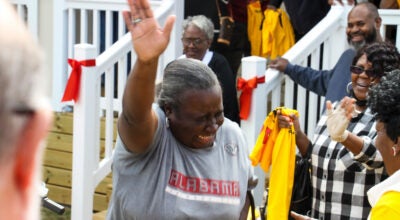Armstrong talks decrease of juvenile violence in county
Published 7:13 pm Friday, July 13, 2018
In 2005, Dallas County was ranked 67th in violent juvenile crime, according to the Alabama Kids Count Data Book.
Fast forward 10 years later, and Dallas County jumped 57 spots and is now rated 10th in the state. In this ranking, the one through five rankings is what each county strives for.
This is no different for District Judge Bob Armstrong, who has made it is his goal to put Dallas County in the top five rankings.
Armstrong started Hope Academy three years ago under the umbrella of Dallas County Children’s Policy Council (DCCPC), which Armstrong is the chairman of.
Each presiding district judge is the chairman, according to Armstrong.
“We give opportunities to change,” said Armstrong. “That was the first side of the strategy, and the second side is that we have to help these kids change. You can’t just paddle somebody and expect that to work everytime. When you combine these two strategies together it works.”
DCCPC and the Dallas County Juvenile Court programs serve the youth and young adults in the county with ages ranging 10 to 21.
The DCCPC programs, combined with the programs of the Dallas County District Court serve 1,500 young adults under 21 annually.
Hope Academy offers a unique learning environment for youth that requires a smaller class size due to “oppositional behaviors and other problems that may require a more individualized treatment.”
Armstrong said it is a collaborative effort between Dallas County and Selma City School systems, Dallas County District Court, Alabama Department of Youth Services (DYS) and the SPAN program.
The academy provides a structural community based alternative school program to address students with behavioral issues, learning barriers, credit recovery issues and GED assistance.
COMPASS Evening Reporting Program (CERP) is considered the cornerstone of the Network and has been in operation since 2010.
“It serves as an afternoon and evening reporting center that offers an alternative for youth who would otherwise be committed to the ADYS or detained in the Dallas County Juvenile Detention Center,” said Armstrong. “This program has been highly successful in rehabilitating at-risk youth in Dallas County.”
Hope Academy is located at the former Phoenix Alternative School location.
Armstrong said that it was a community effort to get the property ready for operation.
“We renovated two-thirds of the building,” said Armstrong. “We came out and said we were going to clean this up, we were going to change this.”
With the help of churches in Selma, the renovations were completed.
“We planted plants, painted, did landscaping,” said Armstrong. “It still looks pretty good.”
Armstrong said despite warnings of vandalism, that there has not been one incident of vandalism in the three years the programs have been at the location.
Also housed at the academy is the Workforce Innovation and Opportunity Act.
Donna Allen, the director of the program said there are two main parts all of the young adults must go through.
“The first step is educational,” she said. “We help get their GED or high school diploma, help them get into vocational schools, college and job corps.
“We schedule job interviews, take them to the interviews, we case manage them for a year after gaining employment just to make sure they can get to work on time,” said Allen. “When they first come into the program they go through what is called Jump Start where they learn everything about getting a job. After that they can go through certifications that we offer including ServeSafe and CDL Licensing.”
The introduction of these and other programs have shown dramatic drops in juvenile crime, according to Armstrong.
In 2008, 91 youths were committed to DYS. This past year, there were only four giving a 95.6 percent decrease.
In 2007, there were 12 serious violent juvenile offenses, and last year, there were only seven, which is a 42 percent decrease.
In 2007, there were 482 delinquent juvenile petitions filed, and last year there were only 181, which is a 62 percent decrease.
In 2008, the average juvenile probation caseload was 139 cases per probation officer. This year, it was only 30 per probation officer.
“Some people think I’m too soft, and then there’s others who think I’m too tough,” said Armstrong. “What I have learned is that I can’t worry about it, but you do have to try and educate people. Our prisons are jammed full so the state lets them out quicker. So some will get out real quick with no intervention … you just have to do what you know is right. If I try and lock people up it doesn’t really fix the root cause of the problem. That is why we do this.”





